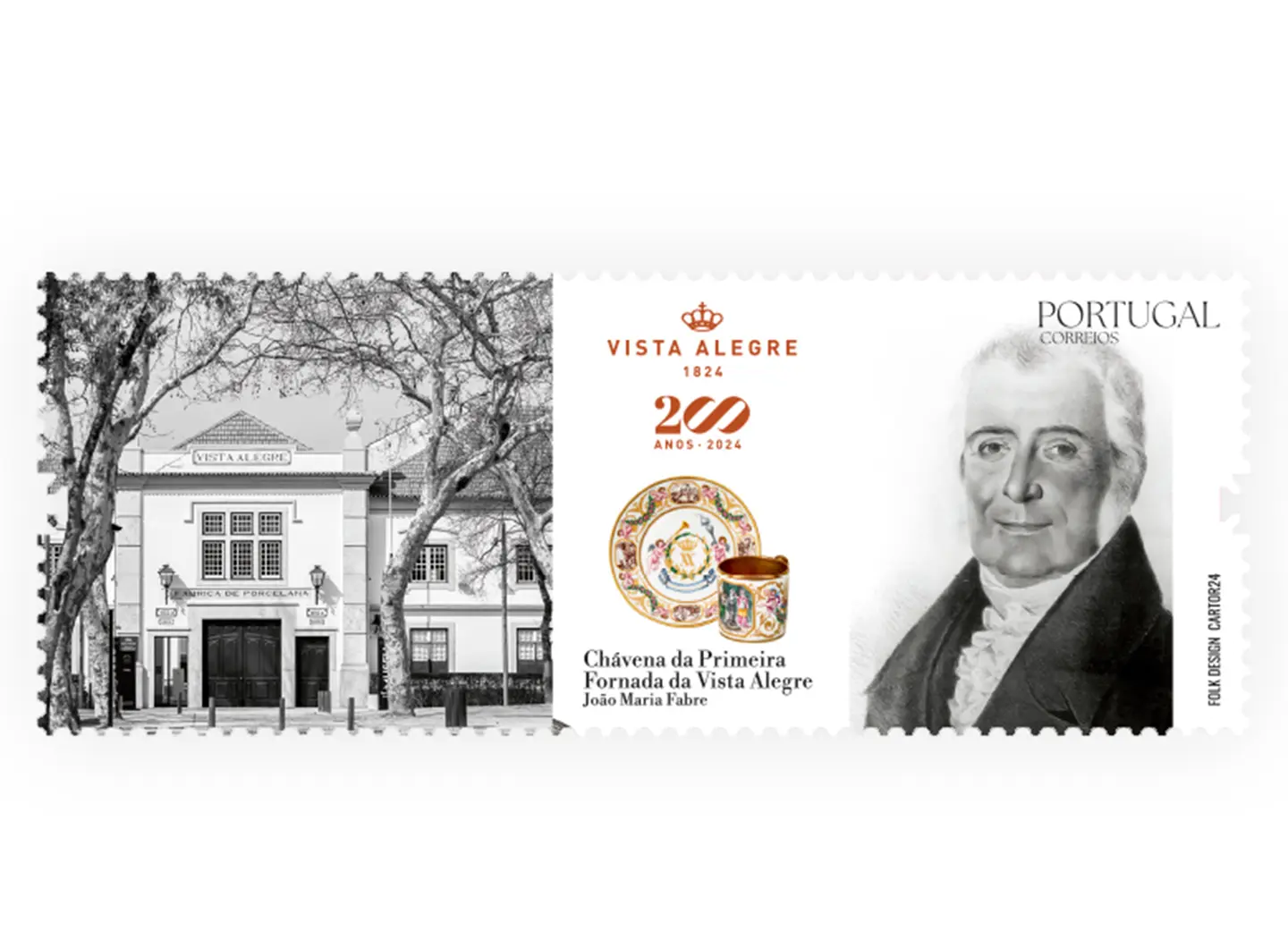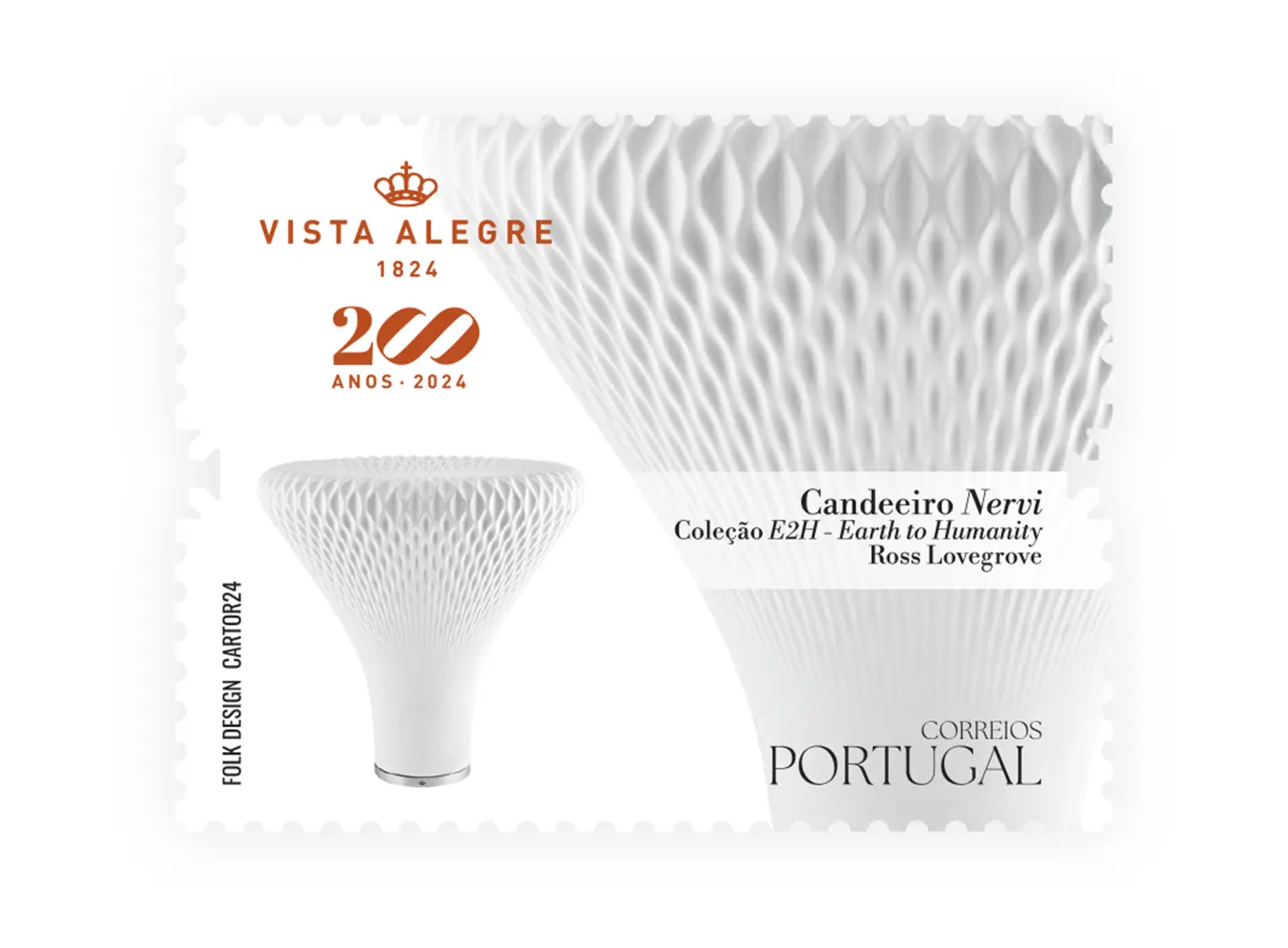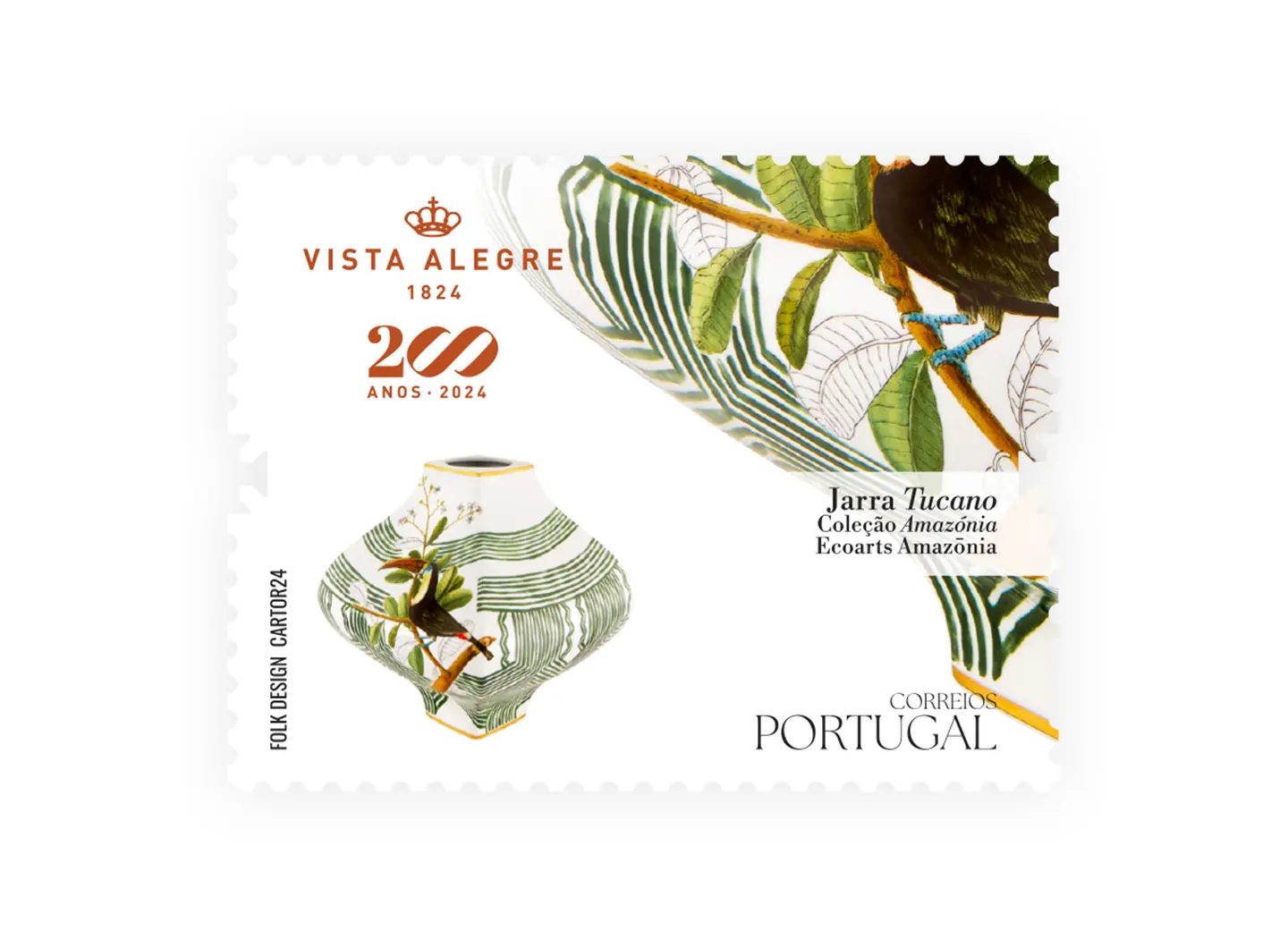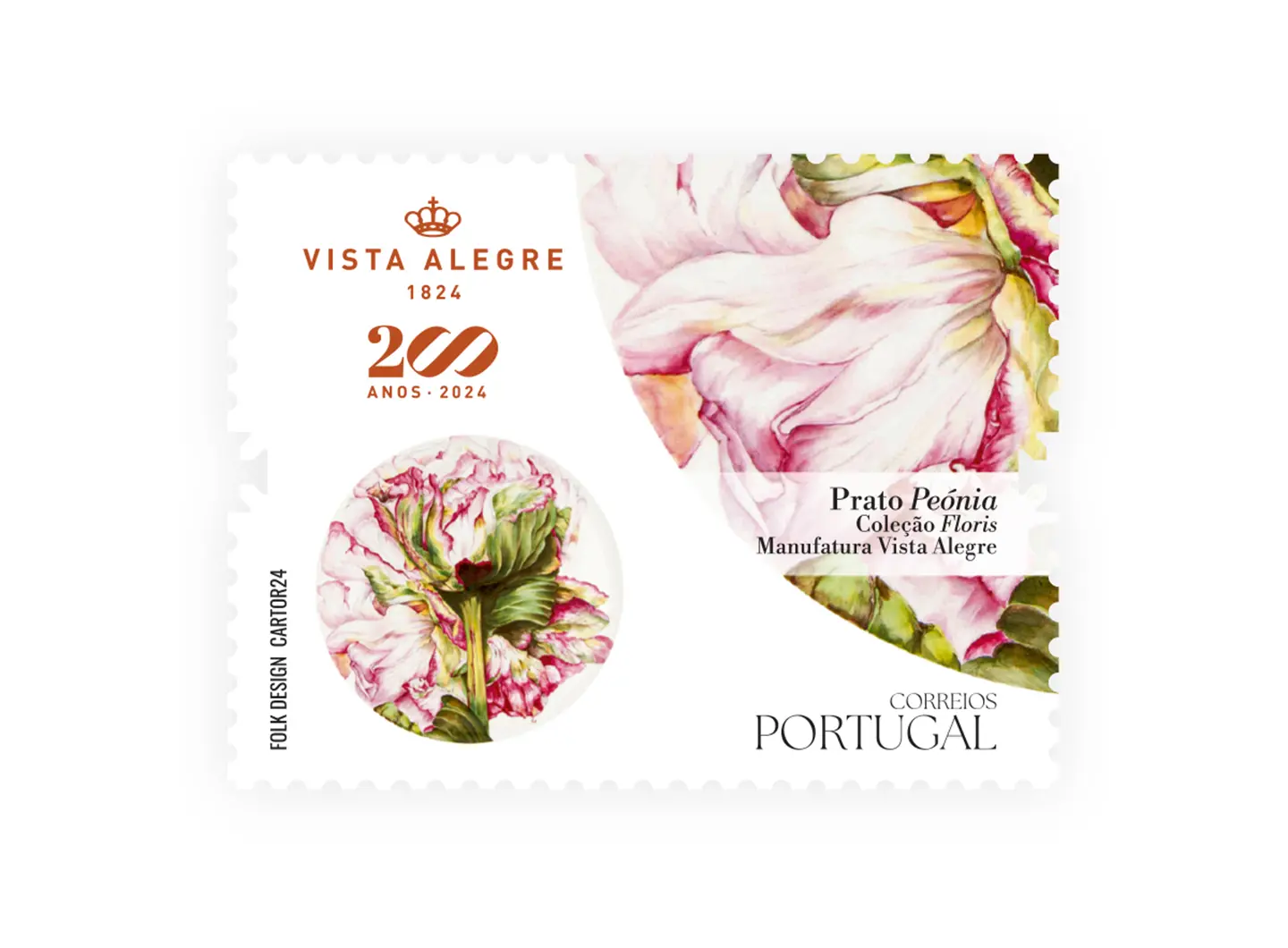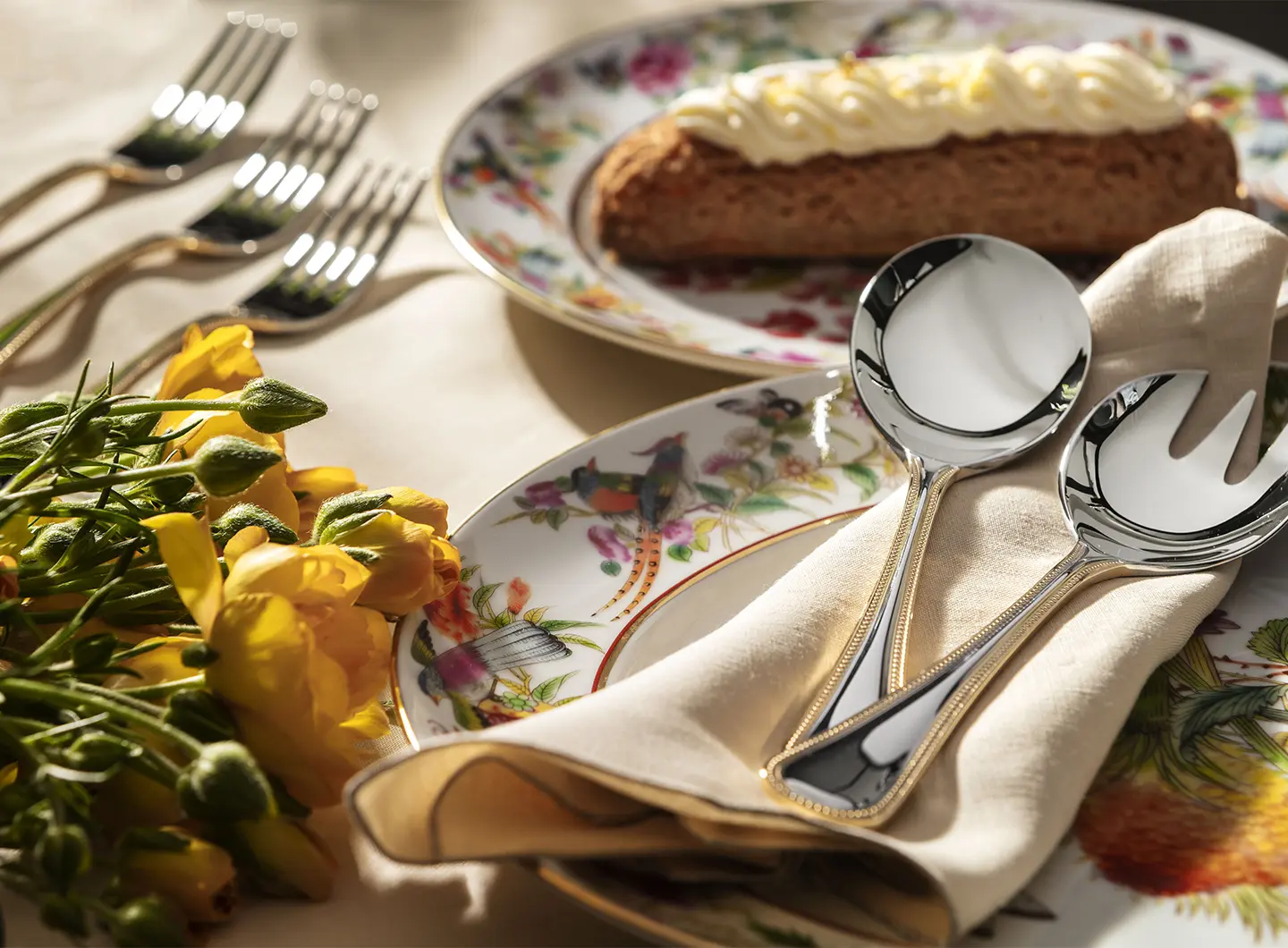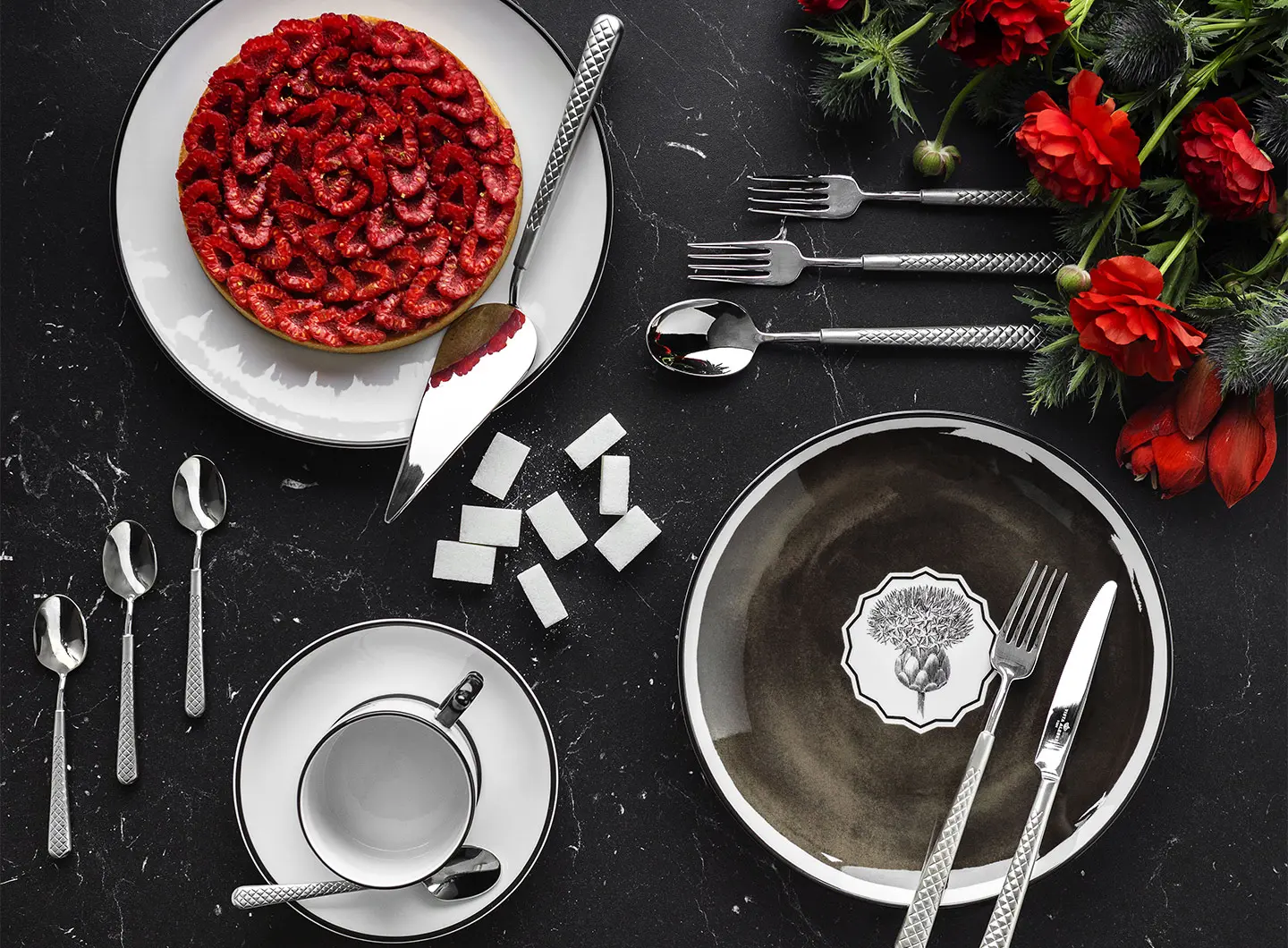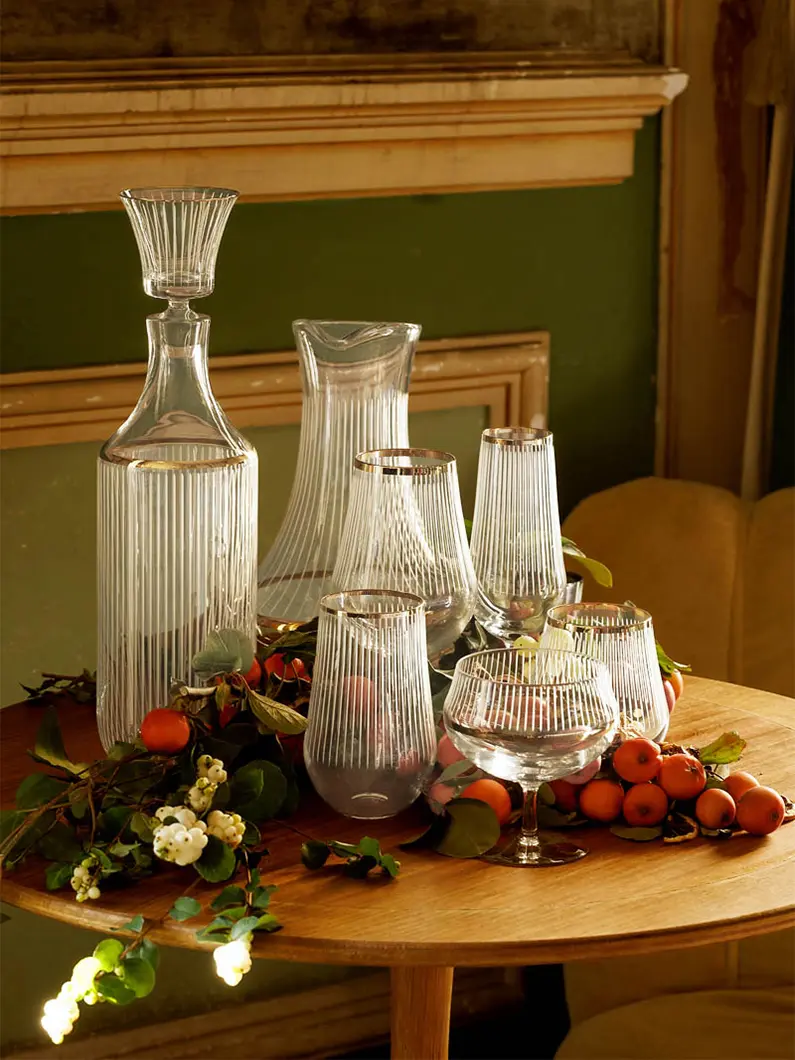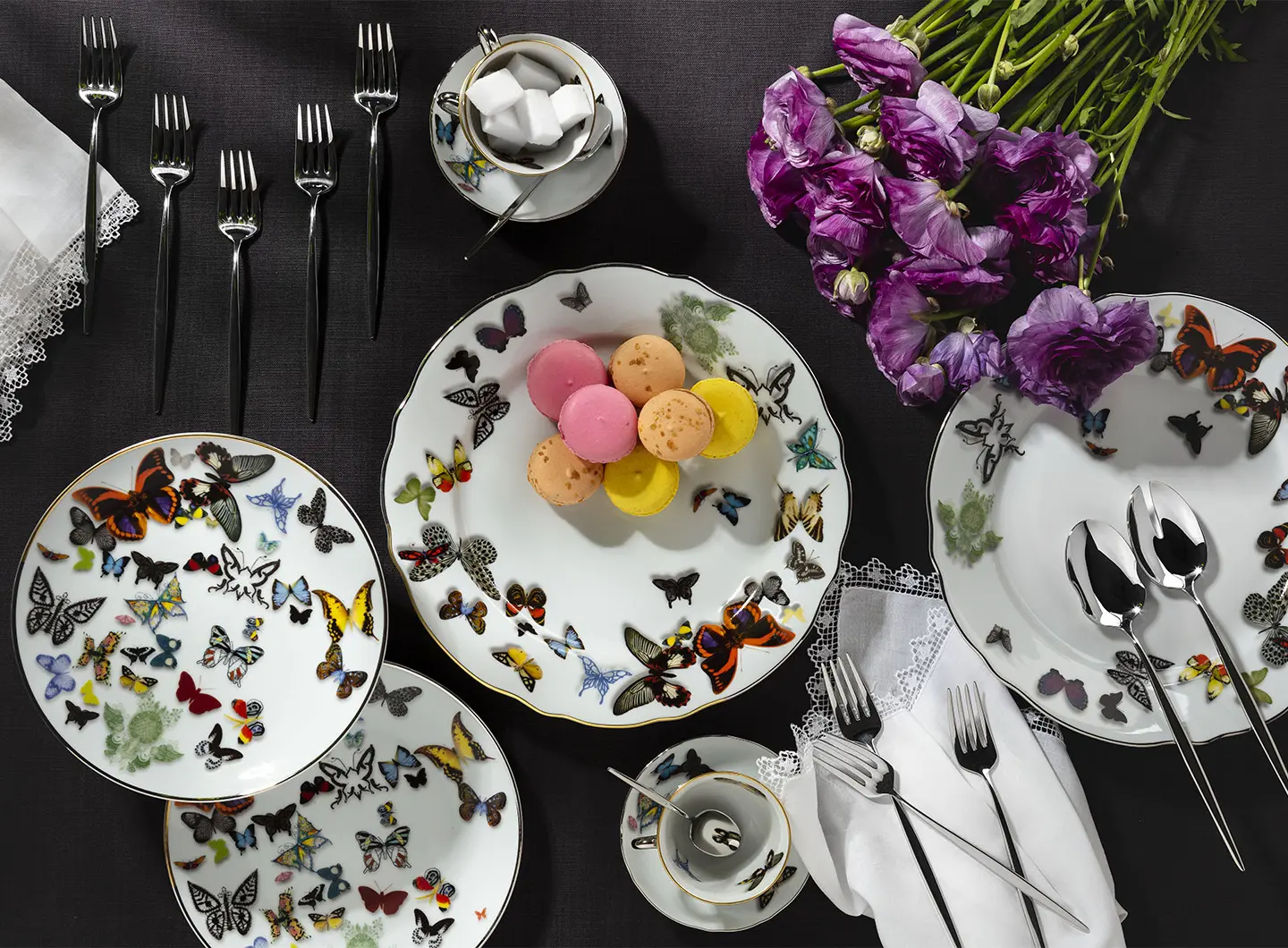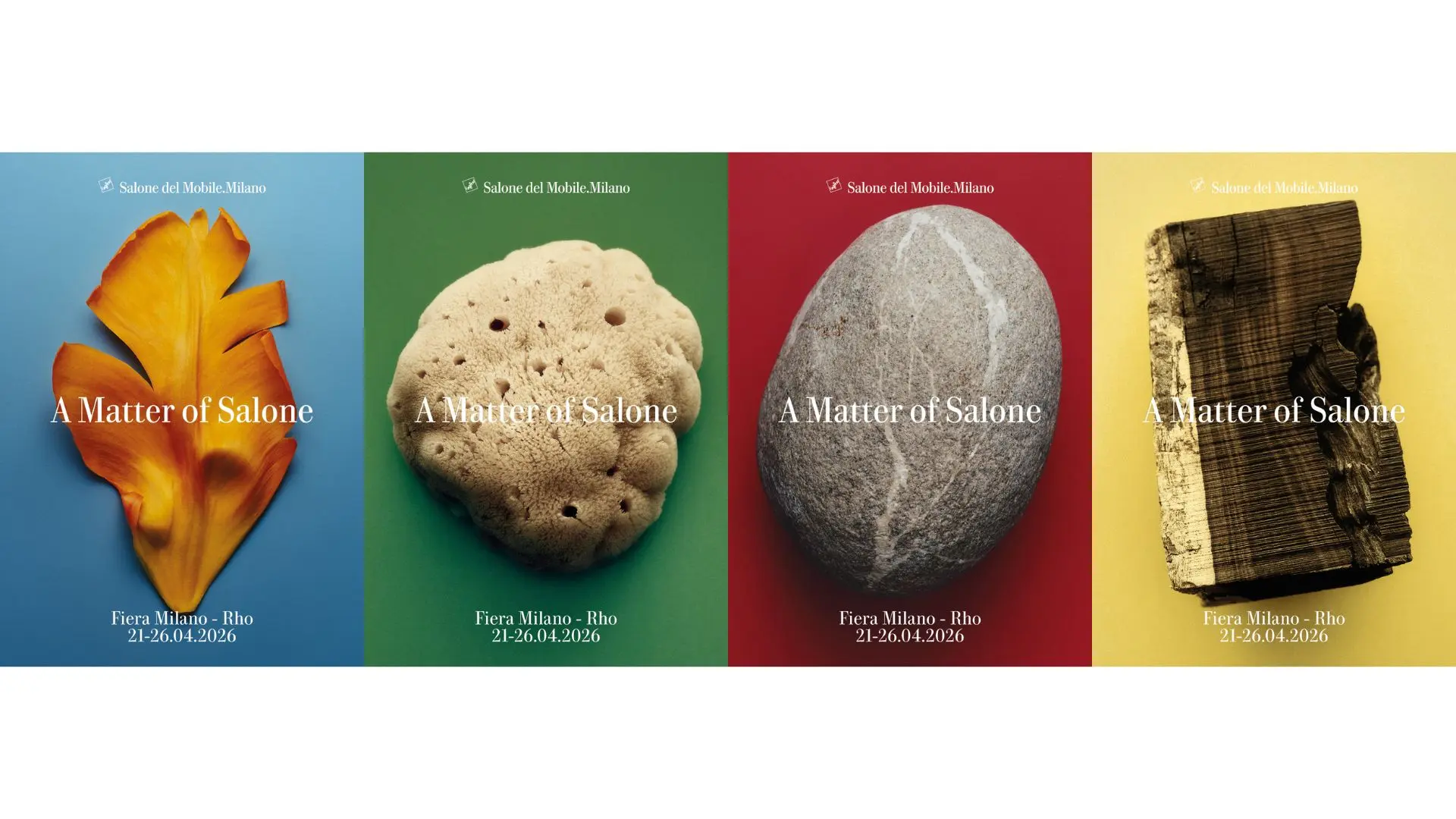From a reflection on humans to matter as meaning: the new Salone communication campaign explores the physical and symbolic origins of design, a visual narration made up of different perspectives, united by a common idea of transformation and genesis
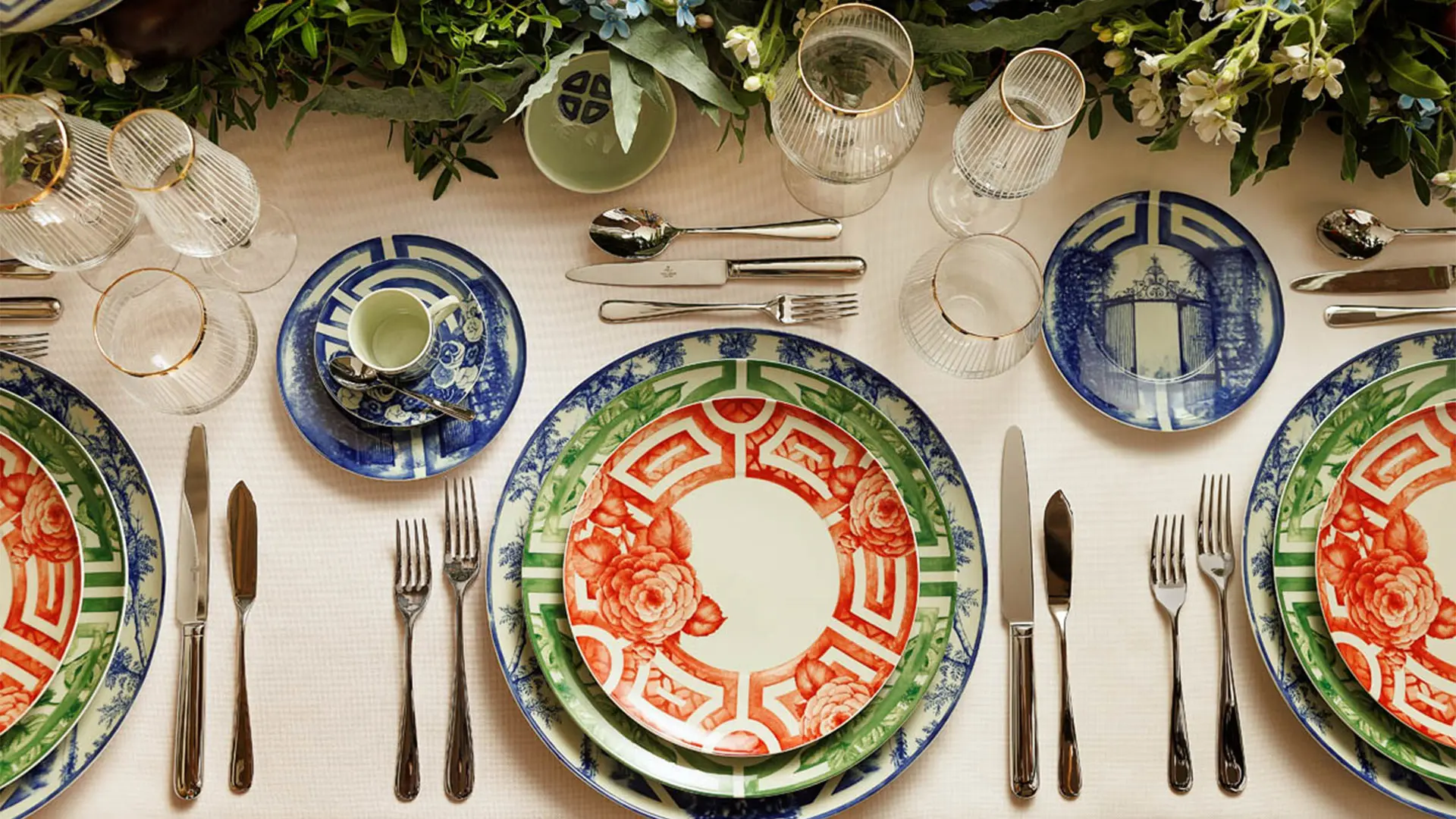
Vista Alegre
The Ílhavo porcelain manufacturer is marking its bi-centenary in 2024. A celebration that pays tribute to both a piece of the country’s history and to an ongoing, vibrant manufacturing heritage
It’s not often that a collection of stamps is used to narrate the story of a manufacturer. Yet, as we all know, the exceptions are often the vehicles for the most intriguing stories. Take Vista Alegre, the long-established Portuguese porcelain brand. Set up in Ílhavo, in northern Portugal’s Aveiro region, the company is celebrating 200 years of continuous production in the field of porcelain. A most unusual industrial milestone, which the Portuguese post office has decided to commemorate with a collection of six original stamps.
The images that illustrate its history are remarkable for their diversity. The first stamp features a portrait of the painter João Maria Fabre, a forerunner of the Vista Alegre school, with the entrance to the historic factory next to it, unchanged over the years. The next features the Nervi table lamp, designed by Ross Lovegrove, an organicist triumph of sensual structural tension. The rest of the stamps demonstrate the company’s taste for decoration, as exemplified by the luxuriant naturalistic patterns on the Péonia plates from the Floris collection, and the craftsmanship of Carlos Calisto’s statue of pink flamingos, very light on its slender porcelain legs.
Whilst admiring this virtuosity, it comes as a surprise to discover that the Vista Alegre production site started life as a chain largely devoted to the art of glass and crystal. Over the years when the formula for the porcelain was still a closely-guarded secret and when the use of kaolin still appeared somewhat alchemic, it would take years for the founder José Ferreira Pinto Basto to perfect an advanced and competitive production, thanks to the contribution of experts from abroad.
The early experiments were made on productions of small soft paste cameos, using what was known as “stone dust.” In 1932, a source of high quality kaolin was discovered in the nearby Val di Rico, changing everything, and the production of hard porcelain became a reality. Glass manufacturing ceased in 1860, making way for porcelain tableware, which became the jewel in the crown of the Ílhavo factory. It was during these years that the first exclusive commissions from the Portuguese royal family started coming in, while illustrious decorators broadened the range of designs and patterns, consolidating and passing on their skill and execution to highly specialised workers. Over the years, international painters swapped ideas and cultural baggage with the top local talents: from France, Victor Rousseau brought with him the taste for Japanese art that was all the rage in Paris, while the Portuguese Joaquim José de Oliveira and Duarte Magalhães studied the typical decorative style of their homeland, reviving and relaunching its appeal.
Thus it was that, over time, without any significant hiccups, Vista Alegre became established as one of the backbones of the country’s manufacturing culture. The imposing, crowded corporate museum is testament to the huge variety of the company’s artistic exploration. The ability to keep a brand vibrant over the long term can never be taken for granted, however, but the input of contemporary architects, artists and designers, involved thanks to the far-sightedness of its directors, has enabled the brand’s heritage to chime with modern taste without compromising its own DNA. The sheer number and visibility of the collaborators involved with Vista Alegre, international designers included, is significant, in addition to the above-mentioned Ross Lovegrove, Alvaro Siza Vieira, Joana Vasconcelos, Patrick Norguet, Marcel Wanders, Jaime Hayon, Malangatana, Inga Sempé, Brunno Jahara and Sam Baron’s names have all been associated with Vista Alegre, contributing to the revamping of the catalogue. As well as classic dinner services, design experiments have enabled the growth of new typologies, sculpture and furniture, for example, furthering research focused in some cases more on morphology than on pictorial decoration.
In addition to the design renewal, the expansion of the company structure has also contributed to greater operational consolidation. In 2001, the porcelain, majolica and stoneware divisions of Grupo Vista Alegre merged with Grupo Atlantis, which specialises in crystal and handmade glass. Their coming together, sanctioned by the new Grupo Vista Alegre Atlantis, marked the birth of one of Europe's largest tableware and gift groups. Following a takeover bid in 2009, Grupo Vista Alegre Atlantis became part of the company Grupo Visabeira. This leap of scale, which took place precisely during the two decades coinciding with the acknowledged growth of the entire manufacturing industry in Portugal, did nothing to undermine Vista Alegre’s aura of exclusivity. As with other European porcelain houses, it is the exclusive collaborations that guarantee an air of uniqueness, and in this case the Portuguese President, the White House, royal houses and embassies, along with public and private institutions are testament to this with their bespoke commissions.
In the meantime, the celebrations for the 200th anniversary continue, always in the name of originality. The stamps aren’t just the only distinguishing element of this special year. An exhibition at the Ajuda National Palace, the publication of a monograph, a documentary produced by Portuguese TV and even the unveiling of an official bicentenary song will mark the fabulous ongoing celebrations. Consolidating yet again the assumption that, when it comes to manufacturing heritage of this magnitude, its legacy cannot just be seen as corporate, but also as community-wide and inclusive, like a strand of national and European identity.
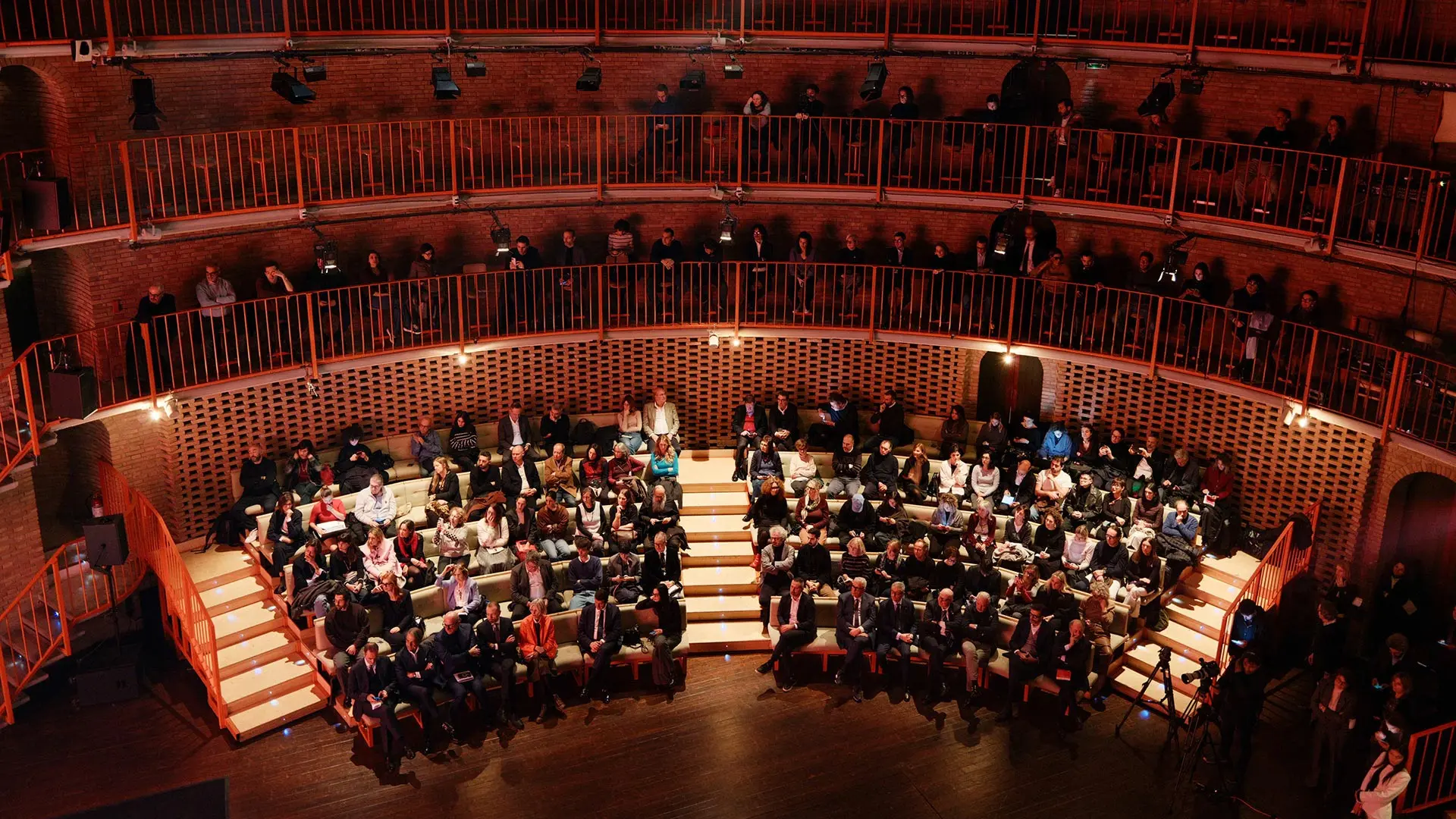
Salone 2025 Report: The Numbers of a Global Event
Data, analyses, and economic, urban, and cultural impacts. The second edition of Salone del Mobile’s “Milan Design (Eco) System” Annual Report takes stock of a unique event and consolidates the fair’s role as the driving force behind Milan as the international capital of design

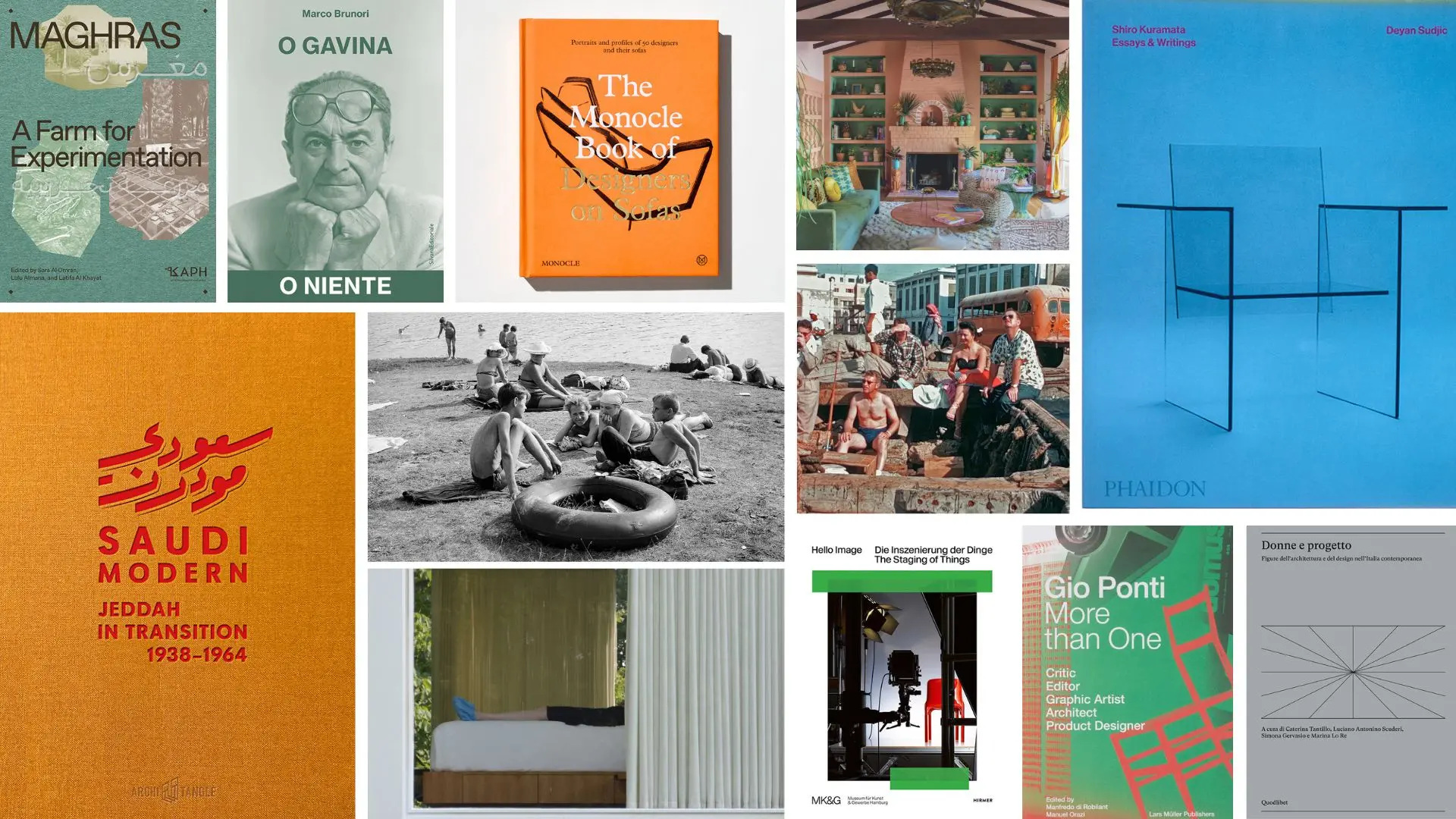
12 books to place under the tree or give as a gift. Conveying discoveries, insights and visions
A journey through women’s interior design, three iconic monographs and the links between design, photography and marketing, up to the transformation of Jeddah, social innovation and a reportage by Branzi and... 50 designers on the sofa



 Stories
Stories
